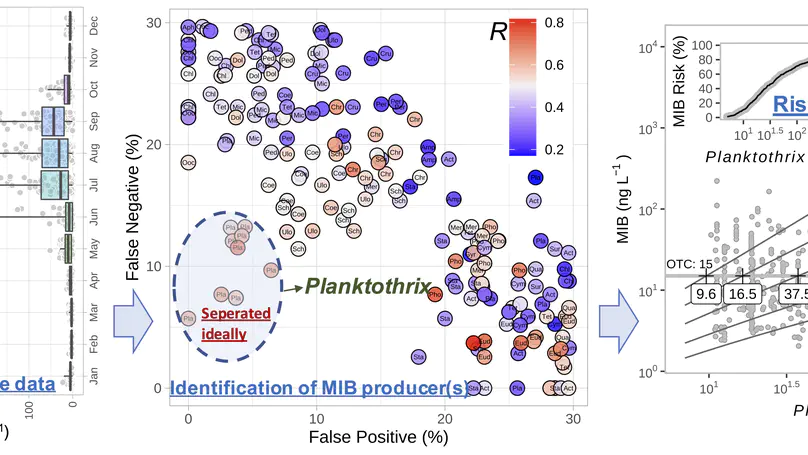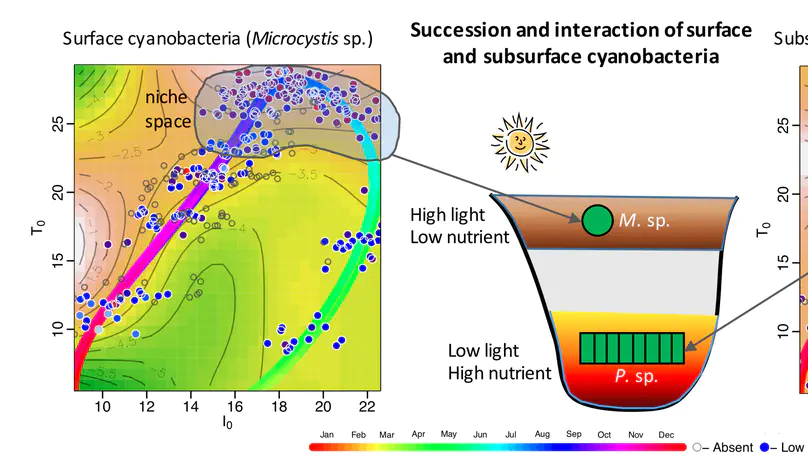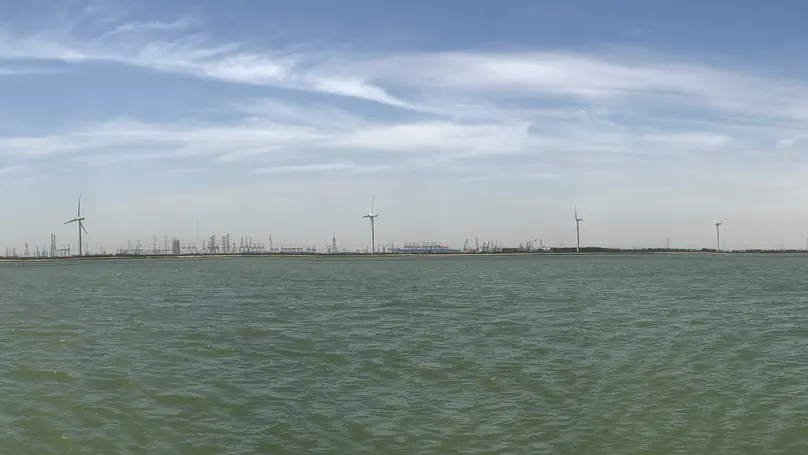个人简介
研究方向:水源地水质安全保障,主要针对水源地由于藻类爆发引起的水体嗅味问题开展研究。
针对我国饮用水源地中普遍存在的由于藻类异常生长导致的水质问题,通过原位监测调查发现、鉴别问题,通过室内及原位模拟实验探索“环境因子-有害藻-水质问题”过程机理,结合过程模型及生态模型开发缓解或解决水源地由于藻类引起的水质问题。
更多信息,请查看个人简历。
- 饮用水源地水质
- 水生生态学
- 生物信息学
- 嗅味
- 浮游植物
-
环境工程博士, 2013
中国科学院生态环境研究中心
-
环境科学学士, 2007
武汉大学
技能
70%
80%
90%
90%
70%
80%
工作经历
最新文章
项目
特色成果

Odor problems in source water caused by 2-methylisoborneol (MIB) have been a common issue in China recently, posing a high risk to drinking water safety. The earthy-musty odorant MIB has an extremely low odor threshold (4–16 ng/L) and is hard to remove via conventional processes in drinking water plants (DWP), and therefore could easily provoke complaints from consumers. This compound is produced by a group of filamentous cyanobacteria, mainly belonging to Oscillatoriales. Different from the well-studied surface-blooming Microcystis, filamentous cyanobacteria have specific niche characteristics that allow them to stay at a subsurface or deep layer in the water column. The underwater bloom of these MIB producers is therefore passively determined by the underwater light availability, which is governed by the cell density of surface scum. This suggests that drinking water reservoirs with relatively low nutrient contents are not able to support surface blooms, but are a fairly good fit to the specialized ecological niche of filamentous cyanobacteria; this could explain the widespread odor problems in source water. At present, MIB is mainly treated in DWP using advanced treatment processes and/or activated carbon, but these post-treatment methods have high cost, and not able to deal with water containing high MIB concentrations. Thus, in situ control of MIB producers in source water is an effective complement and is desirable. Lowering the underwater light availability is a possible measure to control MIB producers according to their niche characteristics, which can be obtained by either changing the water level or other measures.

Identification of MIB(2-methylisoborneol)-producing cyanobacteria in source water has been a big challenge for reservoir authorities because it normally requires isolation of cyanobacteria strains. Here, a protocol based on Pearson’s product moment correlation analysis combined with standardized data treatment and expert judgement was developed to sort out the MIB producer(s), mainly based on routine monitoring data from an estuary drinking water reservoir in the Yangtze River, China, and a risk model using quantile regressions was established to evaluate the risk of MIB occurrences. This reservoir has suffered from MIB problems in summer since 2011. Among 323 phytoplankton species, Planktothrix was judged to be the MIB producer in this reservoir because it exhibited the highest correlation coefficient (R = 0.60) as well as the lowest false positive-ratio (FP% = 0) and false-negative rate (FN% = 14). The low false-positive rate is particularly important, since MIB should not detected without detection of the producer. A high light extinction coefficient ( k = 5.57 ± 2.48 m⁻¹) attributed to high turbidity loading in the river water lowered the subsurface water light intensity, which could protect the low irradiance Planktothrix from excessive solar radiation, and allow them to grow throughout the summer. The risk model shows that the probability of suffering unacceptable MIB concentrations (>15 ng L⁻¹) in water is as high as 90% if the cell density of Planktothrix is >609.0 cell mL⁻¹, while the risk will be significantly reduced to 50% and 10% at cell densities of 37.5 cell mL⁻¹ and 9.6 cell mL⁻¹, respectively. The approach developed in this study, including the protocol for identification of potential producers and the risk model, could provide a reference case for the management of source water suffering from MIB problems using routine monitoring data.

The outbreak of coronavirus disease 2019 (COVID‐19) showed various transmission rate (Rt) across different regions. The determination of the factors affecting transmission rate is urgent and crucial to combat COVID‐19. Here we explored variation of Rt between 277 regions across the globe and the associated potential socioeconomic, demographic, and environmental factors. At global scale, the Rt started to decrease approximately 2 weeks after policy interventions initiated. This lag from the date of policy interventions initiation to the date when Rt started to decrease ranges from 9 to 19 days, largest in Europe and North America. We find that proportion of elderly people or life expectancy can explain ~50% of variation in transmission rate across the 277 regions. The transmission rate at the point of inflection (RI) increases by 29.4% (25.2–34.0%) for 1% uptick in the proportion of people aged above 65, indicating that elderly people face ~2.5 times higher infection risk than younger people. Air temperature is negatively correlated with transmission rate, which is mainly attributed to collinearities between air temperature and demographic factors. Our model predicted that temperature sensitivity of RI is only −2.7% (−5.2–0%) per degree Celsius after excluding collinearities between air temperature and demographic factors. This low temperature sensitivity of RI suggests that a warm summer is unlikely to impede the spread of COVID‐19 naturally.

Subsurface cyanobacterial blooms, are a significant source of odor problems in source water and have been recorded in many oligotrophic/mesotrophic drinking water reservoirs. In this study, we explored the key driving forces responsible for the succession between surface and subsurface cyanobacteria using ecological niche modelling based upon a case study in Miyun Reservoir, China. The results suggest a negative effect of water depth and surface light irradiance (I₀) on subsurface Planktothrix sp. growth (p-values < 0.001), and a unimodal effect of surface water temperature (T₀) with the optimum at 23 ℃ (p-value < 0.001). While the surface Microcystis spp. shows a strong positive relationship with temperature (T₀; p-value < 0.001), and significant effects for the interaction between T₀ and I₀ (p-value < 0.01). In addition, we identified the extent and type of interaction between subsurface and surface cyanobacteria and conclude that the high irradiance surface water combined with sufficient nutrients at the pre-bloom stage are key factors responsible for the preferential growth of surface cyanobacteria, while the gradual decline of the surface cyanobacteria in post-bloom stage is associate with nutrient reduction. This decline and loss of surface populations enhanced underwater irradiance and thus promoted the growth and allowed for succession of subsurface cyanobacteria in deeper layers where the nutrient supply was still adequate. Based upon this, the growth potentials for the subsurface and surface cyanobacteria are different under different environmental conditions: the subsurface cyanobacteria have greater growth potential than surface cyanobacteria in shallow oligotrophic and deep eutrophic reservoirs during median light irrigation seasons.






